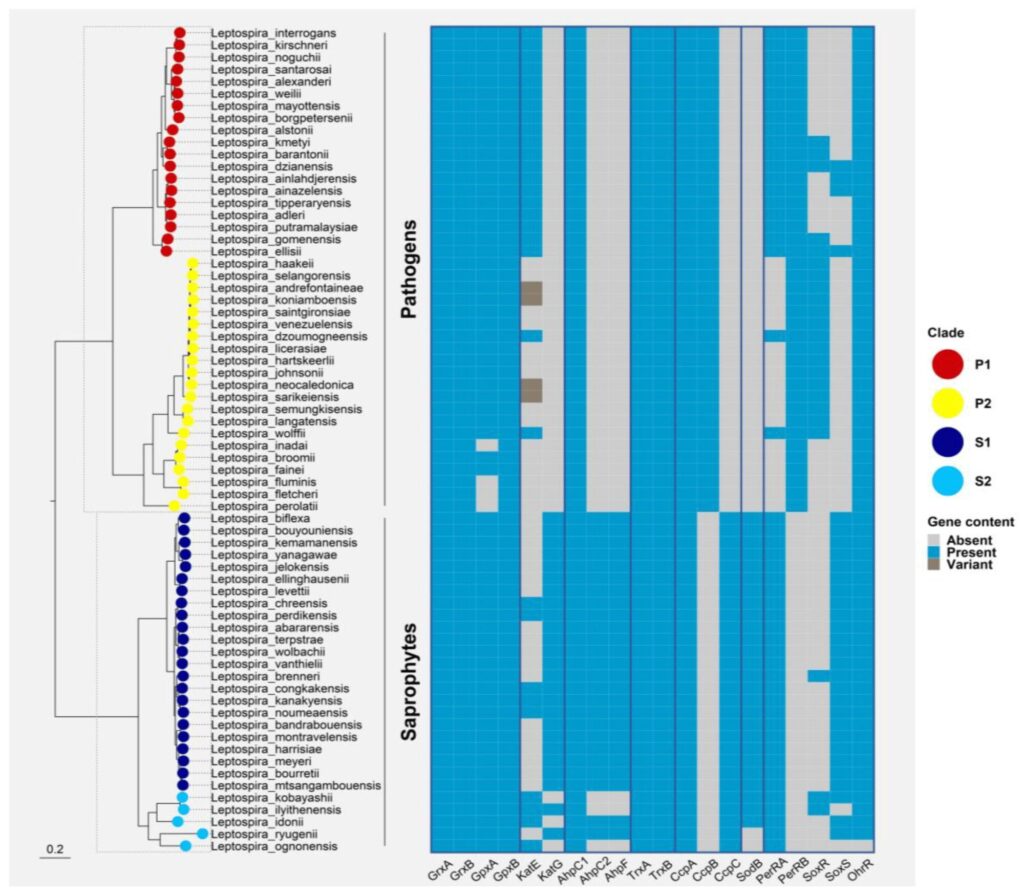About
During infection, Leptospira are confronted with dramatic adverse environmental changes such as deadly reactive oxygen species (ROS). Withstanding ROS produced by the host cells is an important strategy evolved by pathogenic Leptospira for colonizing hosts. Our group and others have demonstrated that defenses against ROS are i) crucial for Leptospira virulence and ii) transcriptionally controlled by two Peroxide Stress Regulators (PerRA and PerRB) that functions as H2O2 sensors.
Genomic analyses show that the repertoire of oxidative stress-related enzymes and regulators is different across the Leptospira genus. A periplasmic katE-encoded catalase, which is essential for Leptospira virulence, is present in P1 pathogenic species, and absent in most saprophytic species. On the other hand, most saprophytes possess a SOD which is, surprisingly, lacking in pathogens. In addition, while PerRA is present in saprophytes and in the P1 subclade, PerRB is absent from the saprophytes. Saprophytes also exhibit a second PerR-like regulator, named PerRC, and a regulator homologous to OxyR, a transcriptional activator and ROS sensor, evolutionary distinct from PerR.

Fig. Phylogenetic distribution of oxidative stress-related enzymes and regulators in the Leptospira genus. P1, pathogens; P2, intermediates; S1 and S2: saprophytes.
We are currently studying the mechanisms allowing Leptospira to adapt to oxidative stress and these adaptation is regulated at the transcriptional level.







